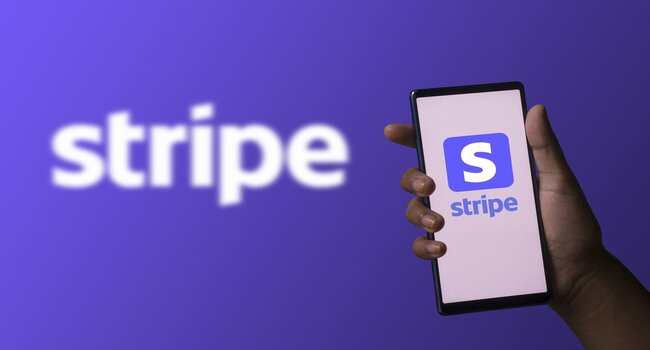Highlights:
- Stripe has launched a stablecoin issuance platform to help businesses mint and redeem tokens with flexible reserve options.
- Stablecoin supply has risen 57% in a year as Stripe added recurring payments and token interoperability.
- Stripe is seeking U.S. banking licenses to expand into mainstream finance.
Stripe introduced a wide range of new services during its annual Stripe Tour New York event. The company unveiled over 40 product upgrades, placing stablecoins and artificial intelligence at the center of its presentation. A major highlight of the showcase was Open Issuance, a platform that allows firms to create and manage stablecoins with minimal code.
Stripe unveils 'Open Issuance', a tool for businesses to launch and manage custom stablecoins with minimal coding. Built on Bridge, using treasuries from BlackRock, Fidelity, and Superstate. Stablecoin market: $300B now, projected $2T by 2028. #Stablecoins #Stripe pic.twitter.com/L2wYktQlm8
— Vincent Bu Lu (@VincentBuLu1) October 1, 2025
The platform builds on Bridge, a stablecoin infrastructure provider acquired by Stripe earlier this year in a $1.1 billion deal. Open Issuance gives businesses the ability to mint and redeem tokens within days. It also gives issuers the option of reserve structures, such as cash and treasuries, allowing them the flexibility of various business models.
Stripe has collaborated with financial institutions such as Lead Bank, Fidelity, and BlackRock to access liquidity and asset management services. Such collaborations enhance the credibility of the new platform and provide businesses with direct access to proven financial institutions. Moreover, issuers using Open Issuance can keep the yield from reserves and design incentives for their clients, increasing their appeal.
Stripe Launches Stablecoin Issuance Platform as Demand Surges
The stablecoin market has expanded considerably in the last year, and the overall supply has risen by 57%. Stripe is rapidly expanding to fulfill this request by incorporating the idea of stablecoins into its merchant solution. Businesses can now accept recurring payments in stablecoins, pay balances in crypto or fiat, and can even spend reserves with cards issued locally.
The Open Issuance also guarantees that new tokens can be interoperated with others that were issued using the platform. This interoperability makes the adoption easy for businesses that would like flexible digital payment methods. A variety of stablecoins are already scheduled to be launched, such as the CASH by Phantom, mUSD by MetaMask, and USDH by Native Markets.
The platform enables businesses to not only issue tokens but also generate customer rewards. Companies can use yields from reserves to design incentives, creating stronger engagement with clients. This approach reflects Stripe’s goal of making stablecoins more practical for everyday commerce.
Bridge CEO Zach Abrams highlighted this independence, saying, “If money movement is core to your business, you should build with stablecoins. But don’t build on someone else’s coin.” His statement reinforced the idea that businesses benefit most when they control their own assets.
Beyond stablecoins, Stripe has continued to expand partnerships in the digital payments sector. Fold, a payments startup, worked with Stripe and Visa to release a Bitcoin rewards credit card. This card allows users to earn BTC with every purchase, further showing Stripe’s role in advancing digital assets.
Together, we’re building the Fold Bitcoin Credit Card — designed to deliver up to 3.5% back on every purchase (2% instantly + up to 1.5% when you pay it off with Fold Checking).
Rewarded in Bitcoin. Built on Stripe. Global with Visa. pic.twitter.com/x4vqwm1kjM
— FOLD BITCOIN (@fold_app) September 23, 2025
Stripe Pursues U.S. Banking Licenses Amid Industry Shifts
Stripe is in the process of submitting a national trust charter application to the Office of the Comptroller of the Currency. The move would subject the company to federal regulation and enable it to proceed to provide stablecoin services under transparent guidelines. The company will also seek a trust license under the Department of Financial Services in New York, which has stringent financial standards.
Stripe Applies for Federal Charter to Issue Stablecoins
Stripe is taking steps to secure a federal charter from the OCC to align with new U.S. stablecoin regulations. This move aims to solidify Stripe's position in the evolving stablecoin market and demonstrates its commitment…
— AI News Swarm (@AINEWS_Swarm) October 1, 2025
Executives stressed that Stripe does not plan to issue its own branded token. Instead, the company will provide infrastructure that enables clients to issue stablecoins while keeping interest income, minus a service fee. Other digital asset firms are pursuing similar paths. Paxos has applied to convert its New York trust charter into a national one. Ripple and Circle have also filed for U.S. banking licenses as they seek larger roles in traditional finance.
Best Crypto Exchange
- Over 90 top cryptos to trade
- Regulated by top-tier entities
- User-friendly trading app
- 30+ million users
eToro is a multi-asset investment platform. The value of your investments may go up or down. Your capital is at risk. Don’t invest unless you’re prepared to lose all the money you invest. This is a high-risk investment, and you should not expect to be protected if something goes wrong.






